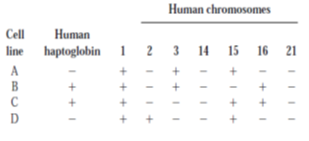#Question id: 10130
#Unit 6. System Physiology – Plant
manganese (Mn) is an essential cofactor in the water-oxidizing process, and a classic hypothesis in photosynthesis research postulates that Mn ions undergo a series of oxidations—known as S states, This hypothesis has received strong support from a variety of experiments, which of the following techniques detect the manganese ions directly and Analytical experiments indicate that how much Mn ions are associated with each oxygen-evolving complex?
#Question id: 10131
#Unit 6. System Physiology – Plant
The detailed chemical mechanism of the oxidation of water to O2 is not yet well understood, but with structural information shows_one electron carrier, generally identified as Yz, functions between the oxygen-evolving complex and P680 to function in this region, Yz needs to have a very strong tendency to retain its electrons, this species has been identified as;
#Question id: 10132
#Unit 6. System Physiology – Plant
Which of the following statements would be correct for photophosphorylation ?
#Question id: 10133
#Unit 6. System Physiology – Plant
The PSI reaction center complex is a large multi-subunit complex in which the antenna chlorophylls are associated with the reaction center Components of the PSI reaction center are organized around as follows choose the incorrect one;
#Question id: 10134
#Unit 6. System Physiology – Plant
Some herbicides such as dichlorophenyldimethylurea (DCMU, also known as diuron) and paraquat, block photosynthetic electron flow from where ?
a.) DCMU blocks electron flow at the quinone acceptors of PSII, by competing for the binding site of plastoquinone that is normally occupied by PQB
b.) Paraquat accepts electrons from the early acceptors of PSI and then reacts with oxygen to form superoxide, O2 – , a species that is very damaging to chloroplast components
c.) DCMU blocks electron flow at the pheophytin acceptors of PSII, by competing for the binding site of pheophytin
d.) Paraquat accepts electrons from the Iron-sulfur system of PSI and then reacts with oxygen to form superoxide, O2 – , a species that is very damaging to chloroplast components
Which of the following combination is true?
#Question id: 10135
#Unit 6. System Physiology – Plant
Which of the following are strongest reductant?

